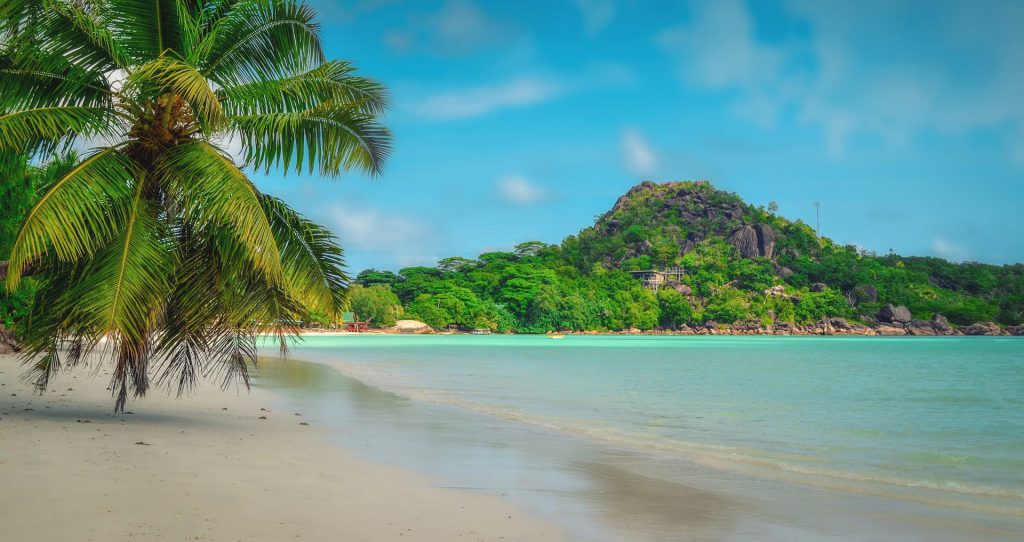
Discovering Africa’s Smallest Country: Seychelles
When you think of Africa, you might not immediately think to include the small islands surrounding the content. The Seychelles itself is made up of a cluster of 115 tiny islands, just off the east coast of Africa in the Indian Ocean. Not all the islands are inhabited, but they all share similar features – soft white sandy beaches, crystal clear waters and lush tropical rainforests.
Although many visitors flock to the islands of the Seychelles for the beaches, there is so much more to this incredible country. For wildlife and nature enthusiasts, the Seychelles offers an opportunity to fully immerse in ecological diversity at its best, with the potential to glimpse unique species, found nowhere else on the planet.
What else might you be missing from this hidden paradise?
Best Time to Visit Seychelles
Another highlight of the Seychelles is the fact that it boasts a year-round warm climate! However, the country does have a dry and wet season. If you are looking to lounge on the beach you might prefer to visit during the dry season which is between April and October. December until March can be particularly wet and cyclone season tends to in December and January, although most of the islands don’t fall within the belt.
Nature and Wildlife
Located within the islands of the Seychelles are two UNESCO World Heritage Sites and 8 national parks, 6 of which are marine parks.
As the oldest oceanic islands found on earth, the Seychelles certainly offer an unspoiled unique haven for wildlife. Home to hundreds of bird species including some endemic ones, the islands have much to offer bird enthusiasts.
Not unusual for ancient islands, there are no native mammal species. However, there are over 2,000 invertebrate species and 80 plant species which are entirely unique to the islands.
Seychelles Cuisine
As an island nation, not surprisingly dishes typically eaten in the Seychelles feature fresh fish, seafood, shellfish and local fruits – banana, mango, papaya and the native breadfruit. In the mix are also many traditional Creole dishes which blends Spanish, French, West African, Italian, German and Haitian influences. These include coconut curry, dhal, satini, ladob saffron rice and shark chutney.
Culture of Seychelles
Due to the vast history of the islands, the Seychelles is now home to an eclectic mix of cultures. From French settlers to British colonials, each historical period of residents contributed to the country’s unique characteristics, including religion, cuisine, music and language.
This has resulted in rich diversity across so many cultural aspects, which creates a captivating and inspiring experience for visitors.
Seychelles Must See Islands
Mahé
Roughly 90% of the country’s inhabitants reside in Mahé, likely because it’s the largest of the islands. This is where the capital city, Victoria and the international airport are located.
There are many activities to do in Mahé, from exploring the rugged terrain of the Morne Seychellois National Park, to diving encounters with awe-inspiring underwater creatures like whale sharks.
Pristine beaches and luxurious resorts line the entire west coast of the island of Mahé. But wherever you choose to go, you are never far away from raw natural beauty.
Praslin
Praslin is the second biggest island in the Seychelles, yet it is home to fraction of the overall population. In comparison to the hustle and bustle of Mahé, this laid-back island offers its visitors a pure oasis to relax and unwind in.
Visitors also often use Praslin as a base to explore nearby islands, such as taking a day trip to Curieuse to encounter the giant tortoises and explore the surrounding mangroves.
Fregate
This wild island provides a unique experience for individuals looking to go off the grid. Fregate is a conservation sanctuary with 16 secluded villas, overlooking emerald seas.
Amidst the lush tropical rainforest, visitors will find free roaming giant tortoises and at the right time of year, the beaches of the island become nesting grounds for both the endangered Green Turtle and the critically endangered Hawksbill Turtle.
La Digue
As the smallest of the three main inhabited islands, La Digue is home to less than 2,000 people. This is a popular island to visit on a day trip but also offers a magical experience for those who choose to spend a bit longer here.
The best way to get around the island is on foot or by bicycle. Be sure to visit Anse Marron which is proclaimed to be one of the world’s most stunning beaches. With so few people, as you can imagine the atmosphere is gentle and inviting.
